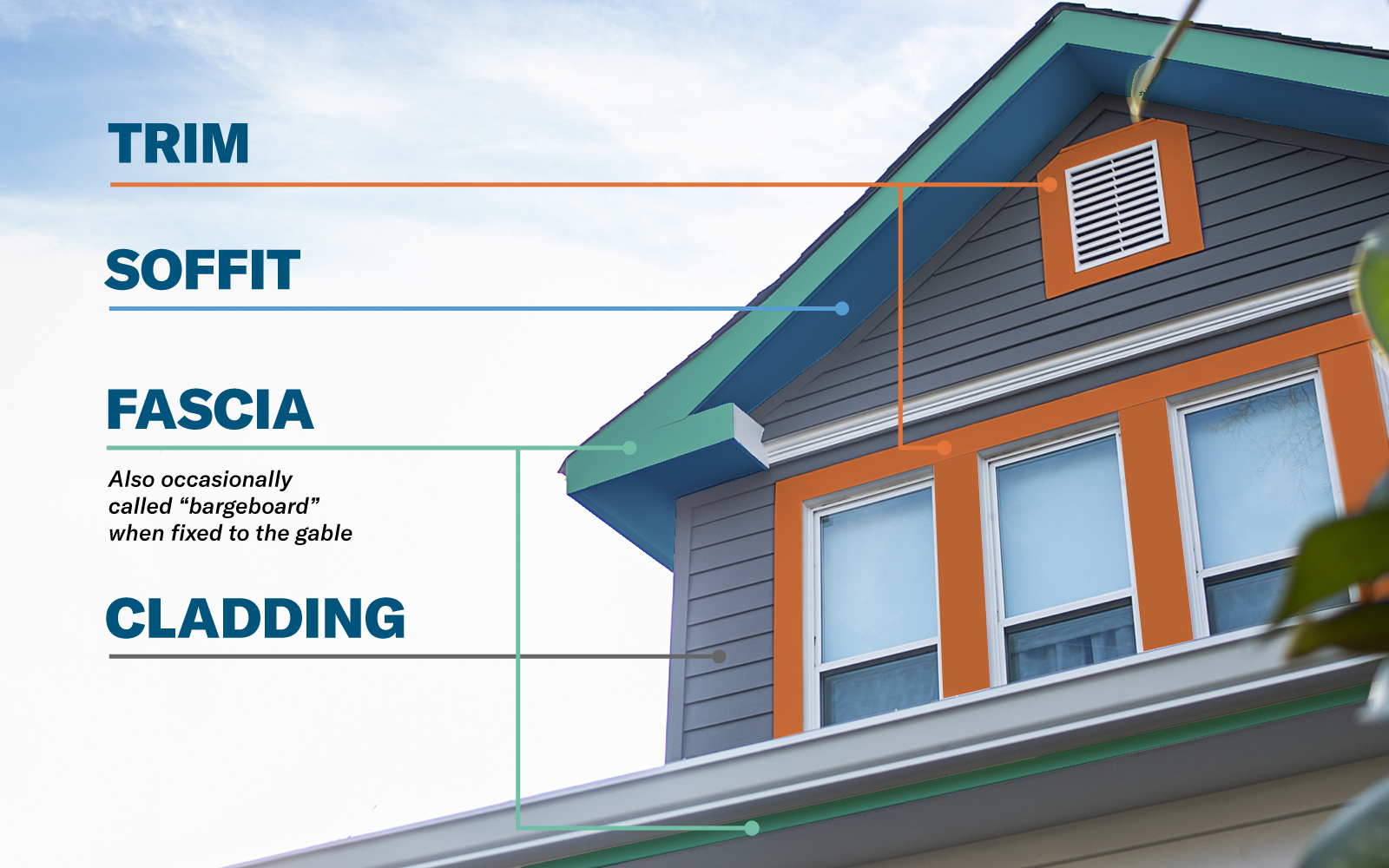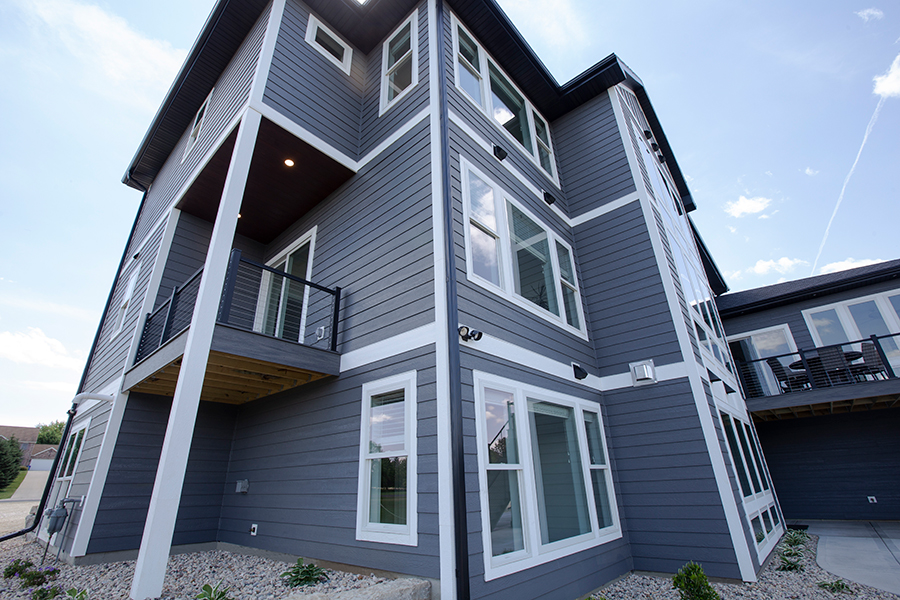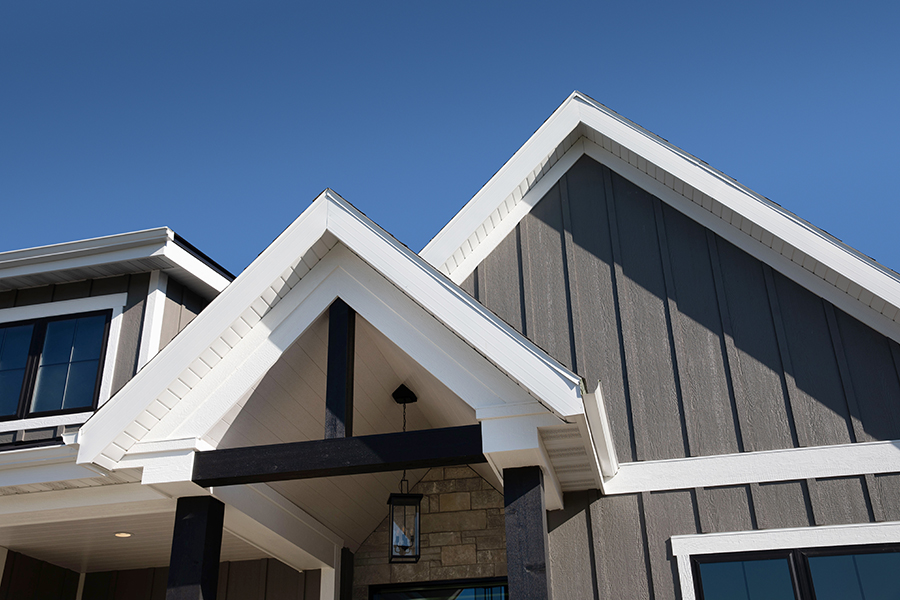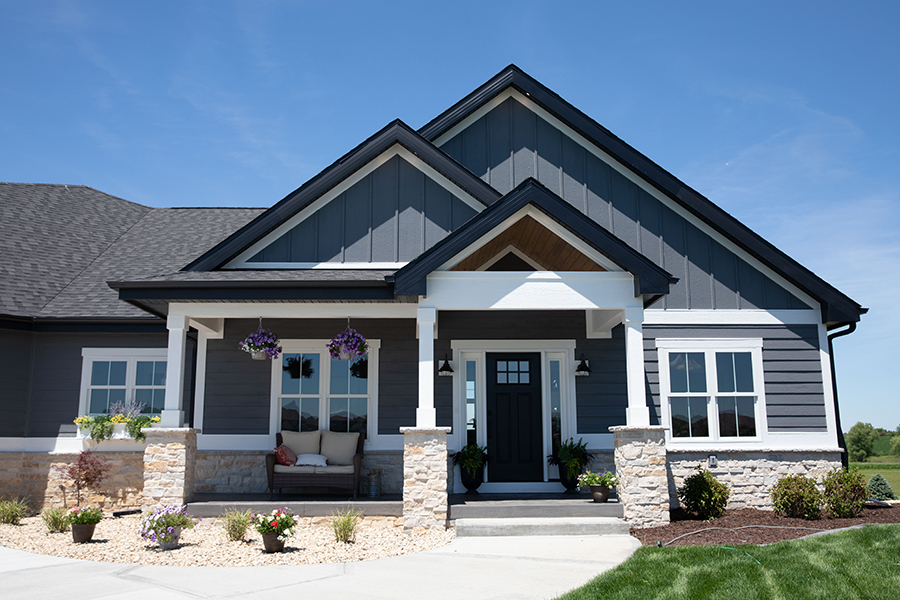Inspiration5 min
What Is the Difference Between Trim vs. Fascia?
When it comes to exterior cladding, homes require more than siding to help protect them from the elements. Fascia and trim are two key elements that help to protect the home, serving as the first line of defense along with siding. To do so effectively, fascia and trim must be durable. We’ll dig into the best options for durable wood fascia and trim later on.
To understand their roles, let’s first compare trim vs. fascia. House trim is the material used to encase windows and doors, among other features, on a home’s exterior, whereas house fascia is a horizontal or angled board that encloses the edge or face of the projecting eaves.


What Is Exterior Trim on a Home’s Exterior?
Trim on the exterior of a house plays an important role in finishing seams around windows and doors, helping to keep moisture out when sealed properly (along with durable siding). Exterior house trim also helps define features of a structure, creating focal points that add interest and curb appeal.
Trim and fascia work together to create a finished, appealing look for a home’s exterior, but they must also be durable to accomplish the purposes for which they’re installed. Soffit is another element of a home’s exterior that helps to keep moisture out—it’s the underside of a roof’s overhang. Together, soffit, fascia and trim help give homes a safeguard against water intrusion, when installed and sealed properly, while also providing a cohesive finished appearance.

What Is the Purpose of Fascia on a House?
Like trim, fascia serves the home by helping to keep moisture out and away from the roof when installed properly. It also supports the roof, shingles and gutters, which help direct water away from the home. Overall, fascia helps create a finished look for the home with a smooth transition between the roof and the walls. Fascia is forward-facing on the home, so when a durable material that matches the home’s look is used it helps to create an attractive look that can withstand the passage of time and adds to curb appeal.

Is Fascia Considered Trim?
Fascia and trim are both exterior elements of a home that help contribute to moisture prevention and curb appeal. Loosely defined, trim is used as fascia and some may refer to it as “fascia trim,” showing that these two terms are often confused due to their similar purposes. But fascia, strictly speaking, is a board that is installed at the edge or face of the overhang.
Gutters are typically attached to the fascia, which are especially important for directing water away from the home and helping to manage runoff water from the roof.
Why Durability Is Key for Trim and Fascia
Along with other parts of the building envelope, both trim and fascia help manage and resist moisture that can infiltrate the home’s structure while keeping other elements out. Soffit, trim and fascia—along with the roof and siding—are all key exterior elements representing a home’s first line of defense, which means they can be susceptible to damage.
LP® SmartSide® Trim & Siding represents one of the most durable siding options on the market, and additional products, like fascia, offer the same advanced durability you can rely on. When you’re looking for the most durable siding, trim and fascia, look no further than LP SmartSide products. They’re manufactured with the proprietary LP® SmartGuard® Process that incorporates four components of protection for strength, moisture resistance and more. Trim and fascia are also available in LP SmartSide ExpertFinish® prefinished colors.

Choose LP® SmartSide® Trim and Fascia for Durability, Beauty and Workability
When you’re discussing the most durable siding options with your clients and homeowners, be sure to highlight trim and fascia as key additional elements that help contribute to the home’s ability to withstand weather. Though built for durability, LP SmartSide trim and fascia also give homes unique style, clean curb appeal, and a look to be proud of. When it comes to your work on the jobsite, LP SmartSide products are easier to install with longer lengths, less waste and less breakage than fiber cement products.
Check out our siding and trim product page to explore our variety of timeless, durable LP SmartSide product offerings.
Continue Reading
News & Stories3 min
History of Partnership with Gary Sinise Foundation
The LP Foundation is a proud partner of the Gary Sinise Foundation, which supports wounded veterans in several ways. You can learn more about the LP Foundation here.
Business Solutions
4 minQ&A: How Home Orientation Impacts Continuous Insulation
There’s a lot to consider when it comes to building an energy-efficient home for your clients and the many nuances that change with each build—including its orientation to the sun. We sat down with Neil Freidberg, Building Science Manager at LP, to unpack the impact of home orientation on continuous insulation needs.
Resiliency Solutions
5 minHOW A RADIANT BARRIER CAN IMPROVE BURIED DUCT PERFORMANCE
One of the questions LP® Building Solutions gets from builders often is about burying ducts in attic insulation and whether combining radiant barrier sheathing with blown insulation over ductwork can benefit homeowners. As with most technical situations, the outcome depends on a nuanced approach. Let’s dig in and explore this question.
Sustainability Solutions
8 minHow to Drive Effective Communication and Collaboration on the Jobsite
Every jobsite has a ton of moving parts, from product shipments, supplies, and schedules to subcontractors and homeowners. It’s no wonder that many project teams can struggle to maintain quality jobsite communication and collaboration throughout the building process. And when communication slips, construction companies inevitably deal with costly errors, inefficient workflows, delayed projects, or wasted time, leaving clients and the team frustrated.